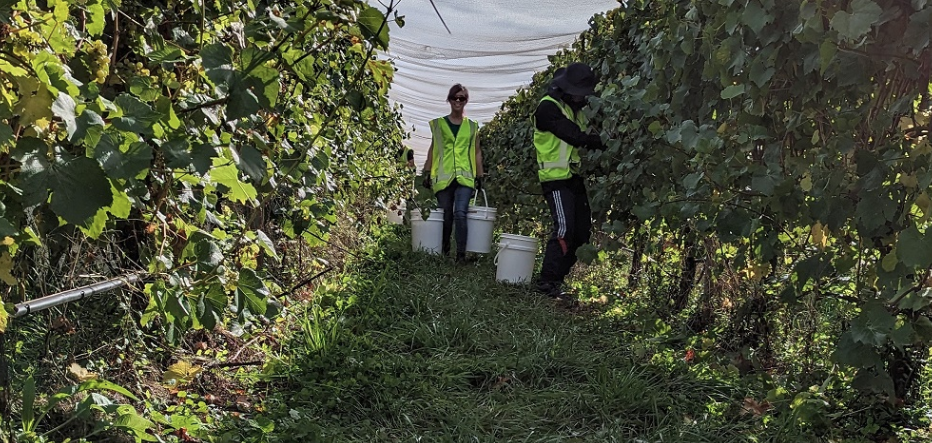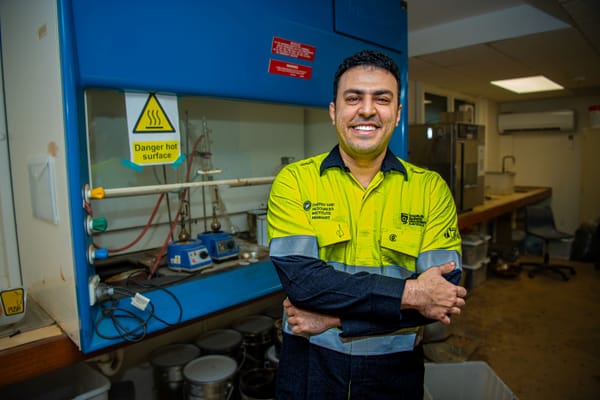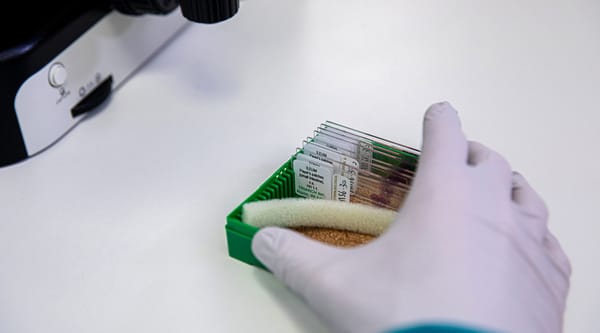Helping to mitigate climate change impacts for Tasmania’s wine industry
The 10-year research trial will assess producing sparkling wine from low-level smoke affected wine grapes, and the sensory impact of smoke taint compounds on sparkling wine during ageing on lees.

First published by University of Tasmania
Wine grapes that are exposed to smoke can be left with undesirable sensory characteristics that may leave them unsuitable for wine making. As the state prepares for bushfire season, important research is underway to identify the level of smoke taint that can be tolerated to produce a premium sparkling wine.
Dr Sam Sawyer is a food scientist at the Tasmanian Institute of Agriculture (TIA). She is leading the project 'Beating smoke taint with sparking wine' funded by the Tasmanian Government’s Agricultural Innovation Fund to help the wine industry mitigate the impacts of smoke taint.
“Smoke taint from bushfires is a huge concern for wine producers and we know the risk will increase with climate change. We’ve been lucky over the last few years, but that won’t last forever,” Dr Sawyer said.
“Smoke taint can lead to negative sensory outcomes which manifest during the wine making and ageing process. This means significant financial outlay has already been invested with little chance for return as smoke-affected wines are often unable to be sold. The worst affected wines have been described like drinking from an ash tray; we’re hoping to change this.”
The 10-year research trial will assess producing sparkling wine from low-level smoke affected wine grapes, and the sensory impact of smoke taint compounds on sparkling wine during ageing on lees.
"When it comes to smoke taint, wine makers know that if it’s bad enough to discard it, and they know if its low enough its fine, but it’s that grey area in between where you’ve got some taint, what on earth do you do then? Perhaps you can’t make a table wine, but you might be able to make a sparkling wine that you can be proud of,” Dr Sawyer said.
“Smoke related characteristics can evolve in the bottle as the wine ages and that is a risk for sparkling wine production, which is often aged for some time before release. We want to understand what happens over three to 10 years if you have low levels of smoke taint,” Dr Sawyer said.
“It’s not necessarily that the smoke taint flavours change, it's all the other things around it that change and all the other compounds which are part of the ageing process which change the perception of the smoke taint compounds.
In April 2023, Dr Sawyer and her team harvested 540kg of grapes at Ghost Rock Vineyard in Tasmania’s North-West. Additional grapes were provided by Swinging Gate Vineyard in the Tamar Valley, who are the wine maker for this project.
The grapes were transported to TIA’s Hobart campus for a smoking trial in collaboration with the University of Tasmania’s Fire Centre Bushfire Research Hub. This trial accelerated the smoke taint conditions that could occur when a vineyard is exposed to a bushfire.
“This was a significant undertaking. We constructed a purpose-designed structure to contain 200kg of grapes while a consistent level of smoke was applied for one and a half hours. We also reserved non-tainted grapes to be used later for blending,” Dr Sawyer said.
The wine making process will be undertaken at Swinging Gate Vineyard where the grapes will be pressed, blended and fermented in tank for around three months before they are bottled and aged on lees for up to 10 years.
The research is a collaboration with peak body, Wine Tasmania, which has identified smoke mitigation as a high priority research focus.
“Vineyards are particularly susceptible to damage from smoke, a major risk in Tasmania’s heavily forested landscape and with a changing climate,” Sheralee Davis, CEO of Wine Tasmania said.
“This research will help to investigate opportunities to minimise the impacts of smoke through sparkling wine production.”




